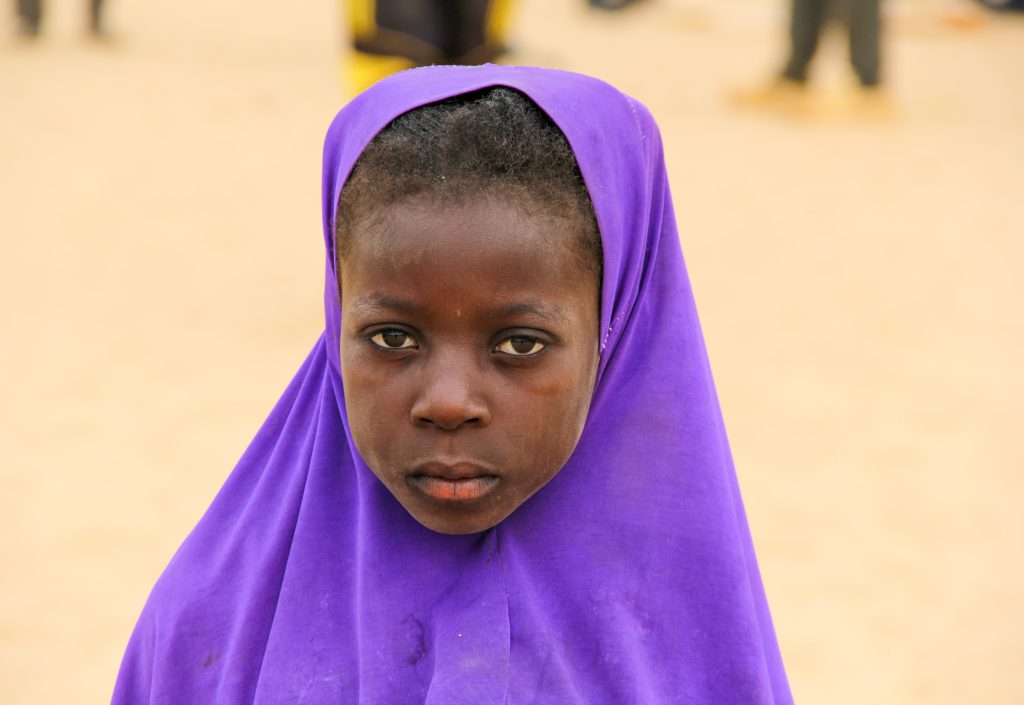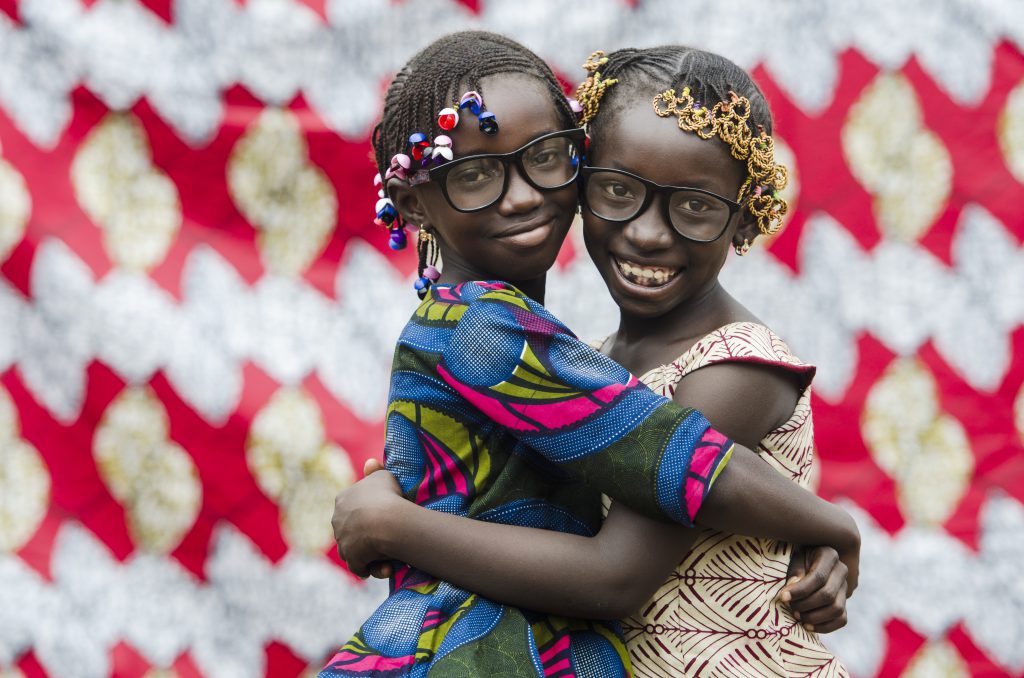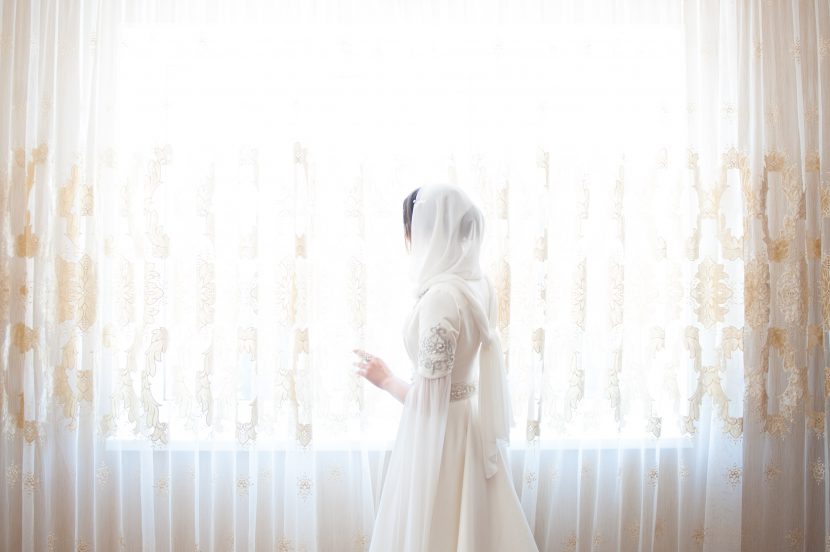In the world, as we know it, marriage stands for a symbiosis of support and understanding. However, the sad reality is that not everyone gets the same chance to make it right. Whilst it is true that forced child marriage practice has decreased over time, we still have a long way to go.
Unfortunate instances of early child marriages shot up again during COVID-19. It is expected that more than 100 million girls will marry off in the future before they come of age. (UNICEF, 2021b) Unfortunately, due to the lack of basic information regarding their rights, early pregnancy often has a very negative impact on both the young girls’ physical health and their potential educational path.
Early marriage causes and effects
We might find it hard to imagine a place where girls as young as eight and nine are being forced to join holy matrimony. Yet, it happens all around us, with South Asia as the leader of this unhealthy custom, (namely India and Bangladesh) that robs 46% of young girls of their youth. (Anju Malhotra, 2010)
There are many reasons why people still approve of these illicit marriages that violate human rights. Hardships such as poverty and destitution often cause parents to make desperate decisions. Combined with poor living conditions and ill-education, it doesn’t come as a surprise that this practice still prevails in Asia, Africa, and Latin America. It goes without saying that the majority still find girls to be more suitable for housework, rather than attending school. When faced with horrors of war that are raging in many areas as we speak, parents also marry off their daughters hoping they will have a better life.
In some areas of Afghanistan, Pakistan, and the Middle East, early child marriages are deeply embedded in the tradition. Some parents abuse their children as means of settling debts and family affairs. (UNFPA, 2012) Families encourage underaged girls to get married for the sake of honor and dowries. Before the war in Iraq in 2003, child brides under 15 made up 15% of the population. It is a terrible tragedy that this number spiked up in the 2016 post-war Iraq, where more than 26% of girls were married off under the legal age. (Rand Lateef, 2021)
Maternal health concerns during teenage pregnancy
The term adolescent pregnancy refers to girls from 13 to 19 years of age having children. Teenage pregnancy is risky due to three important factors: the danger of premature delivery, extremely low birth weight, and high infant mortality. Psychologists argue that expecting mothers are not mentally prepared for the role, which encompasses both sexual and social maturity. (Michael K. Magill, 2007)
Girls who get pregnant very early don’t make well-informed decisions because they lack basic information. They usually leave school to get married young, backed up by their families that pressure them to conceive. As the entire communities support these harmful practices, the tradition keeps on thriving. People in the impoverished areas don’t have access to preservatives, as well as books and educators.
Living in disbelief that high mother and child mortality is nothing but normal, they bring many lives into danger. Girls’ bodies are not mature enough to endure nine months of childbearing, which is why they are prone to complications. Girls under 18 are more likely to become victims of domestic violence. Also, adolescents carrying children out of wedlock can suffer even harsher social punishments that can damage them for life. (Plan International, n.d.)
Child marriage during COVID-19
It is good to know that the number of unions in the last decade has drastically dropped. (UNICEF, 2021a) But, things started to fall out of place, once again, during the pandemics. A chain of misfortunate events had devastating consequences on households during the world health crisis. Severe economic setbacks easily pushed families below the poverty belt, which further jeopardized children’s rights.
Over 1.4% of the population affected is already living on the brink of the abyss in developing countries. (David Malpass, 2020) Enduring devastating economic hardships can lead to more violations of children’s rights, who are then forced into marriage or labor. Most recent events in Ethiopia, Mozambique, and Congo during COVID-19, show us just how dangerous the consequences can be. (UNICEF, 2020a)
Ever since schools closed, the girls in Ethiopia lost access to the World Bank’s initiative Keeping Girls in School. The goal was to improve children’s lives by giving them a fair chance to succeed. Humanitarian organizations are only left to assume that this has led to more child brides in the country, as they were exposed to more gender and domestic violence. (The World Bank, 2022)
Similarly in Mozambique, the number of emergency calls has doubled in comparison to the same period in 2019. Forced child marriage, sexual harassment, and gender violence are just some of the reasons why people reached out for help. On the west side of the continent, in the Democratic Republic of Congo, there has also been a leap of growth in child marriages. (UNICEF, 2020a)
Ethnic disparities in pregnancy-related deaths
The good news is that most deaths related to pregnancy can be prevented. Girls are not ready to have babies in the early stages of life, as their maternal age and level of education contribute to the overall maturity level.
In the United States alone, black women are four times more likely to lose babies than white women. (Samantha Artiga, 2020) They are also getting pregnant earlier and suffer more stress bringing kids into the world unprepared. There are many underlying factors that have detrimental effects on the pregnancy, from socio-economic implications to parental immaturity. (Samantha Artiga, 2020)
Ethnicity and religion play an important role in child marriage. African American women are at a greater risk of keeping their pregnancy, just like most African girls are more likely to get married before their first period. West and Central Africa rank the highest when it comes to early nuptials, with more than 41% of girls married off before they reach 18. (UNICEF, n.d.)

According to the data gathered in 2021, Niger has the highest rate of child marriages in the world. The report claims that more than 75% of girls are married off before they reach 18. Most of them are only 15 years old, which represents the legal age in some African countries. Chad, Bangladesh, Guinea, and Mozambique also engage in this unethical practice in large numbers. (M. Szmigiera, 2021)
Unlike in Africa, several countries in the European Union have permanently banned child marriages. Other countries are also considering joining the Netherlands, Sweden, and Germany in their effort to protect children. The European Parliament Committee is urging governments to end this unlawful practice. (Heather Barr, 2018)
There are no official reports indicating the number of child marriages in Europe, as most of them happen in Eastern Europe among Roma communities. The children either marry without their parents’ consent or go through an arranged marriage. These unions are often not registered which makes it more difficult to keep track of the numbers. (World Health Organization, n.d.)
In countries such as Bangladesh where child marriage is still widely accepted, 51% of girls get married before they come of age. That amounts to a staggering number of 38 million child brides in the country. Half of them are usually married off before their 15th birthday. These extremely high numbers are usually accredited to the fact that Bangladesh is one of the poorest countries in the world. The data shows that richer residents reject this unhealthy practice, unlike their compatriots living in rural areas. (UNICEF, 2020b)
Children living in war-affected countries are more likely to suffer from violence in any form. More than 10,000 children have died in bombing and bloodshed in Syria. Back in 2011, the Syrian Arab Republic recorded 13% of registered child marriages. After 11 years, the situation for Syrian girls who fled their country is even more devastating. According to the data from 2013, this number climbed up to 25% of girls getting married to older partners in Jordan, Egypt, Turkey, and Iraq. (Save the Children, 2014)
Preventing child marriage with effective educational practices
“If you educate a man, you educate an individual. But if you educate a woman, you educate a nation.”
– African proverb
Passing the knowledge to youth and educating adults can be a good way to protect children’s rights. Encouraging girls to attend school will then benefit entire communities. Creating initiatives and launching programs will help people in developing countries understand the dangers of an old practice. We should be more vocal about children’s rights to health, education, protection, and freedom. All children should have an equal chance to succeed, growing up in a nurturing environment that will help them reach their full potential. (Children’s Rights Alliance Ireland, n.d.) In turn, they will be fully prepared and confident to take good care of the future generations to come.

Having seen young girls such as the age of 12 pregnant, our team at Humanium is working tirelessly to protect children’s rights and end child marriage and teenage pregnancies. We help raise awareness for youth by engaging in activities in some of the world’s most remote areas. We believe that only together we can bring to an end the unlawful custom of child marriage. We are always happy to receive volunteers who share our vision. You can also join us by making a donation, or sponsoring a child.
Written by Lidija Misic
Bibliography:
Artiga, S. (2020, November 10, 2020). Racial Disparities in Maternal and Infant Health: An Overview. Retrieved May 15, 2022, from https://www.kff.org/report-section/racial-disparities-in-maternal-and-infant-health-an-overview-issue-brief/
Bank, T. W. (2022, Feb 10, 2022). Girls’ Education. Retrieved May 15, 2022, from https://www.worldbank.org/en/topic/girlseducation#1
Barr, H. (2018, April 16, 2018). European Parliament Committee Urges End to Child Marriage. Human Rights Watch Retrieved May 20, 2022, from https://www.hrw.org/news/2018/04/16/european-parliament-committee-urges-end-child-marriage#:~:text=Several%20countries%20%E2%80%93%20the%20Netherlands%2C%20Germany,to%20marry%20under%20some%20circumstances.
Children, S. t. (2014). Too Young to Wed. Retrieved May 15, 2022, from https://resource-centre-uploads.s3.amazonaws.com/uploads/too_young_to_wed.pdf
International, P. (n.d.). Sexual and Reproductive Health and Rights: Teenage Pregnancy. Retrieved May 15, 2022, from https://plan-international.org/srhr/teenage-pregnancy/
Ireland, C. s. R. A. (n.d.). What Are Children’s Rights. Retrieved May 15, 2022, from https://www.childrensrights.ie/childrens-rights-ireland/childrens-rights-ireland#:~:text=Children’s%20rights%20include%20the%20right,as%20a%20child%20grows%20up.
Lateef, R. (2021, February 28, 2021). The Causes and consequences of child marriages in the Middle East. The Borgen Project Retrieved May, 20, 2022, from https://borgenproject.org/child-marriages-in-the-middle-east/
Malpass, D. (2020). COVID-19 to Add as Many as 150 Million Extreme Poor by 2021. Retrieved May 15, 2022, from https://www.worldbank.org/en/news/press-release/2020/10/07/covid-19-to-add-as-many-as-150-million-extreme-poor-by-2021
Michael K. Magill, M. (2007, May 1, 2007). Adolescent Pregnancy and Associated Risks: Not Just a Result of Maternal Age. Retrieved May 15, 2022, from https://www.aafp.org/afp/2007/0501/p1310.html#afp20070501p1310-b6
Organization, W. H. (n.d.). Those most at risk: Roma girls of eastern Europe and child brides in central Asia. Retrieved May 20, 2022, from https://www.euro.who.int/en/health-topics/Life-stages/child-and-adolescent-health/news/news/2012/12/child-marriage-a-threat-to-health/those-most-at-risk-roma-girls-of-eastern-europe-and-child-brides-in-central-asia
Szmigiera, M. (2021, Apr 9, 2021). Countries with the highest share of married girls 2021. Retrieved May 20, 2022, from https://www.statista.com/statistics/1226532/countries-with-the-highest-child-marriage-rate/
UNFPA. (2012). Marrying Too Young: End Child Marriage. Retrieved May 15, 2022, from https://www.unfpa.org/sites/default/files/pub-pdf/MarryingTooYoung.pdf
UNICEF. (2020a). Child Marriage in COVID-19 contexts: Disruptions, Alternative Approaches and Building Programme Resilience. Retrieved May 15, 2022, from https://www.unicef.org/esa/media/7651/file/Child-Marriage-in-COVID-19-contexts.pdf
UNICEF. (2020b, October, 2022). Ending child marriage: A profile of progress in Bangladesh. Retrieved May 15, 2022, from https://data.unicef.org/resources/ending-child-marriage-a-profile-of-progress-in-bangladesh/
UNICEF. (2021a, March 7, 2021). 10 million additional girls at risk of child marriage due to COVID-19. Retrieved May 15, 2022, from https://www.unicef.org/press-releases/10-million-additional-girls-risk-child-marriage-due-covid-19
UNICEF. (2021b, June 2021). Child Marriage. Retrieved May 15, 2022, from https://www.unicef.org/protection/child-marriage
UNICEF. (n.d.). Child marriage, Key Result for Children. Retrieved May 15, 2022, from https://www.unicef.org/wca/child-marriage


